Encounter
First step in 'The Labyrinth and the Dancing Floor'
Hello dear readers, I have just returned from Berlin, a city I do not know in a now-untravelling life where I faced the exciting but daunting task of giving a keynote talk at a conference about ‘Myth, Ritual and Practice in an Age of Ecological Catastrophe’. And so for our first step (of four) in this Labyrinth and the Dancing Floor strand, I’m looking at that crucial opening move that allows in what you do not know or cannot control. It includes a way of forging a collaborative metaphysical encounter with fellow explorers that lay at the heart of he presentation. It is rather later than I had hoped as my computer had its own small unexpected catastrophe en route. Now back on track!
The first step in the dance is the step away from what you know, off the track and into the unknown, the terra nullius (or so you think) that is the white page of paper, an empty road, or a country you have never been to before. A foolish and wise move that everything in your culture tells you not to make, yet you open your body, heart and soul to experience.
In this case, the encounter is with the desert lands of San Luis de Potosi, Mexico, and I am with Robert and Mark and April, having just consumed a litre of mashed cactus and apple juice. Pretty soon, everyone is rolling around on the stony mountain pass, trying not to throw up, or laughing, or feeling sorry for themselves (me). But something else is kicking in. Right, I say, we need to be doing something, now! This is peyote, this is Mexico, this is the sacred mountain of the Huichol people. You don’t lie around with peyote in your body on the slopes of this mountain, You get to work. Lickerty spit!
But how do you do that without guidance? And what work would that be? We are sitting under the only tree that was not cut down for the silver mines (they left it for god according to Teresa who had given us directions). We need to take turns, I say with sudden authority. We sit in a small circle facing each other. April starts to keen, howling like a wolf for her Native American (Sioux) ancestors. Mark and Robert take up combat positions as Chinese emperor and sage, I start telling a story about a raven who seems to know what to do in these baffling circumstances. We find ourselves acting out archetypal positions, and not just seeing them but feeling their effects on our living beings, as the yuccas wave to us, the vultures watch our moves, as the storm threatens to come in. We are aware, as our bodies and voices adopt different roles. that we are accessing deep time memories and what seems fixed and bound can become fluid and untangle in these frequencies induced by the cactus.
Everything is real, as Theresa warned us, as we took the track up into the mountains, especially the monsters.
After what seems like an aeon (travelling with peyote can take up to 18 exacting hours), we know something has changed forever, You are granted access to these visionary and dynamic realms, to the planet that now appears entirely sentient, but you also realise that you have to give back for your life here. That’s the deal. There are obligations to the Earth, to the mountain, to the plants, creatures, rain and all elements that host us. These karmic stories we carry in our body memories have to be enacted and deconstructed. At the same time, the connections with the mountain, with the sky and our cosmic human forms also need to be shown and articulated. And it was the timeless structures of ancestral myth and ceremony that acted as a bridge between dimensions and enabled these double acts to happen.
Most of all, it depended on the agreement we made to speak out and listen to each other in a configuration that marks the universal symbol of the sun.
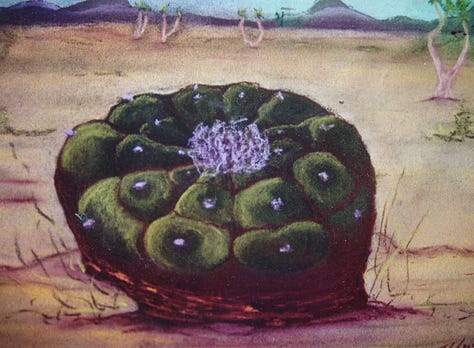
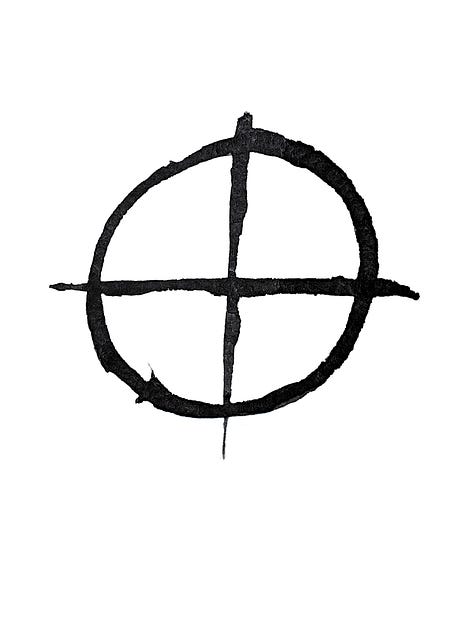
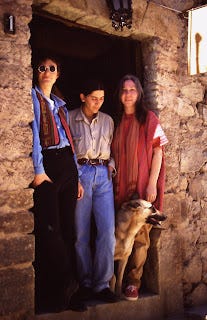
gridbusters!
If you asked me how did this work then appear in the world? I might start with a poem Mark wrote on a bus. The poem made of interlocking questions was not about a journey in Oxfordshire where we were then living but about a mushroom trip in Palenque, Mexico in a pink hotel, where, when he was not turning into a jaguar or watching Mayan villages unfurl on the ceiling, Mark spent a lot of time looking for the key to the door of the room. In the way of all entheogens, this became a mythic search.
After he read it out loud, the shape of four long-limbed figures came to me, standing in the four directions with the sun in the centre. So I drew them in ink and spent the following three days inventing a game we could play that could help bring out the extraordinary qualities we had once seen in ourselves and our companions on the mountain, as well as the blocks we had to overcome to access and inhabit them. It was a game of charades of sorts, where you picked cards out of a hat and took turns to ‘perform’. The blocks appeared like grids in a prison window.
The qualities of the heart took the form of a word, such as joy or coherence or discernment and the grids, the form of questions (such as Do you feel abandoned by this? Can you abandon yourself to this?). The point of the game was to bring the energy into the room and bust the grid. Not just to talk about them but to inhabit the struggle they brought about the way we once had done in Mexico, and to help liberate one another. This was made possible by the impersonal roles we agreed to play which were called dooropener, keyholder, timekeeper and space holder (see roles below).
Later we take the game on an epic journey across the States in a small white convertible, an exhilarating and impractical vehicle, which was a stylish drive on the twisty 101 en route from Vancouver to San Diego, but another matter in Idaho or Yellowstone in the snow. We played the game with strangers we met on the road, with friends we sometimes stayed with: we played on porches, in yards, kitchens and motel rooms, from Minneapolis to Austin, Texas. But pretty soon wherever we played the game, those inherited traumas started playing out. And we were no longer anchored in a physical territory, or dimension, or frame that supported these kinds of investigation. Things got gnarly.
The game, we found out, was real but not always the right container for breezy transformations. Civilisations keep everyone in their place with rules and terrors. It is hard to change anything structurally when it is holding sway. The resistance we came up against wasn’t just manifested in the people we played with, but also the places we were visiting - lands haunted by genocide and displacement.
It wasn’t until we began teaching plant and Earth dialogues on our return to England following years of dreaming, plant and community activism practice, that those original four roles came back, and we found their right set and setting. They returned as a way for people to share their own encounters with the land and forge a creative future-making culture together; when we began to host the eight fires of an ancestral cycle that celebrates human beings’ core relationship with the Earth and sun.
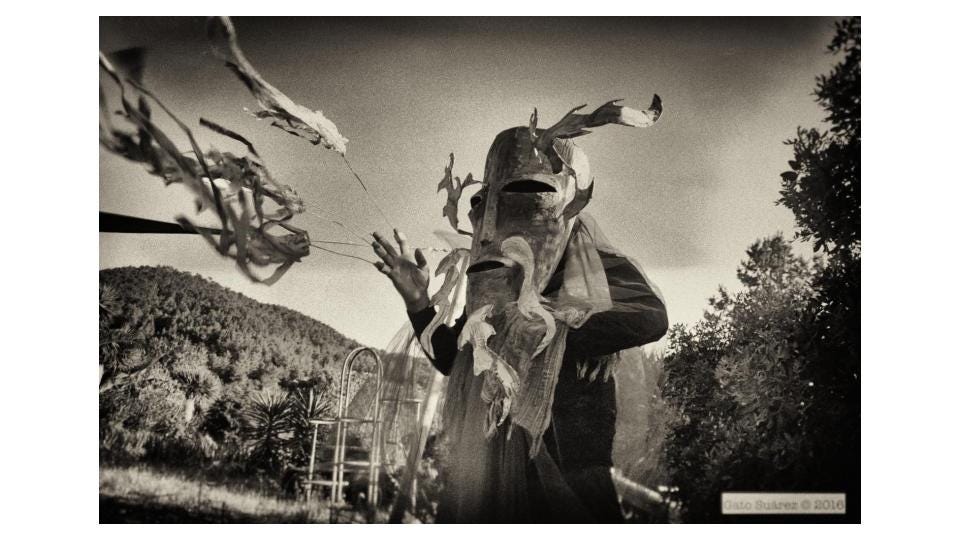
How we begin again
The Encounter is at its heart a story about ‘listening’, not ‘hearing’ but listening; to other, older narratives which, at the deepest level, form who we are, and if we do, we can imagine how we can ‘begin’ again
- Simon McBurney
One of the reasons it is so devastating to lose Mark, my compadre in all these explorations, is that the ‘kiva conversations’ and teachings we hosted can no longer happen in the way they once did. When Mark was here he brought those mountains and plants and sky and all the encounters we had together into the room, so that a different atmosphere or frequency could be created. But although I may not be able to hold gatherings anymore, I can pass on the ‘tech’ and honour the work we did with people and places in this Red Tent series, and also here in Potsdam, as I am now about to take my ‘turn’ on the first day of this conference.
I start with the encounter, the first step of the Labyrinth, where you move away from what you know and enter an unmapped territory that acts directly on your imagination. This step contains all excitement of travelling without an agenda, leaving behind the mess and sorrow of an old world, that unmistakable feeling of ‘other’, of freedom, as you sit outside in a cafe in an unknown city, where elder trees with flowers the size of dinner plates edge the waterways and parks. When you let go of the safety net, and walk heedless towards a relationship with life that you long for, without knowing you long for it.
But it is also where you can find yourself without a compass, vulnerable, confused and lost.
I’m telling a packed room on the top floor of the Bildungsforum, how you need a full on unexpected encounter with the planet in all its dimensions to ‘break open your head’, otherwise you remain trapped in the labyrinthian mind of civilisation. Nothing new or unexpected can happen. I’m talking about the first time that happened to me on a fashion shoot in the Peruvian rainforest, and about a theatre production that dramatises this kairos moment more brilliantly than any book or film. It is called The Encounter.
This tour-de-force performance by Simon McBurney and the Complicité company follows the real-life track of Loren McIntyre, a National Geographic photographer, who becomes lost in the Brazilian rainforest while searching for the Mayoruna people. The encounter plunges him into another world where he is forced to navigate with a different consciousness, as the tribe retreats deep into the forest to escape destruction. When he stumbles upon them, they are engaged in a ritual to return to their ancestral origins in order to know how to proceed.
When the first lockdown in 2020 took hold, I found myself taking part in an online discussion about the play. On the panel, the Indigenous filmmaker Takumã Kuikuro spoke of his people having to adopt ‘two minds’, a double consciousness, to both maintain his own forest-rooted culture and deal with the ravaging modern world that encroaches on his people’s way of life,
For us, it should be the other way round, I said. We need to develop a consciousness to re-entangle ourselves in the sentient Earth, as McIntyre had to do to when his watch and camera disappeared and he lost his way. We need to radically change how we perceive the living world and our place within it. And crucially, our perception of time and space.
I am showing some of the mythic and ritual language that performers and artists use that enable ‘modern’ people to cross from a entropic left-hemisphere perception of the world, to a infinite regenerative right-hemisphere one. Because no matter how smart we are about metaphysics and sustainability (and there were many fierce academic minds in the room), we need a bridge that only artists and writers, medicine people and mythtellers can construct.
So I show some slides of our Dark Mountain dramaturgical work, the ancestral world that underpins the conventional linear story we are imprisoned by: of Kate Walter’s painting of a Mesolithic Orkney woman buried with her horses, of Robert Leaver walking down Broadway in New York on his hands and knees, the soul bearing its burden of climate breakdown, of the Theatre of Ancient’s reclamatory ‘Walk of the Moon’ in Ibiza, of Dougie Strang’s Badger Dissonance performance, a litany of our broken kinship with beasts, of the myriad ways we have forged a reconnection with this planet in our imaginations and creative work for over 12 years now. And finally I show the diagram of the four roles we practiced in our Eight Fires workshops, and demonstrate how it can be an essential way to hold a joint alchemical attention.
If we do not shift our alignment to the sun in collaboration with our fellows, I tell the audience, we will be forever trapped in the frozen rings of the planet Saturn, caught on the nightmare wheel of history. And, in the words of William Stafford: following the wrong god home, we may miss our star.
This is the tech I wanted to share with everyone in the room that evening, and now here with you. My way of giving back to the peyote that taught me, to the mountains of Sierra Madre, and to Mark, all of whom I keep treasured my heart, memories so strong, it feels as if it’s only yesterday I was there with them. Because, as the ancestors always tell us, remembering what we really love is how we start again.
What did we see in each other’s faces as we sat by the tree? In our voices, in the ways we moved? We saw and felt ourselves as tyrants and ancestors, crows and ravens, fairies and ghouls, priests and emperors. We experienced ourselves in myths and folk tales. We felt ourselves trapped in grey places, in dissolving cities, in faraway clouds. We sat in the four directions and this cross held us together in these myriad dimensions, as we brought each other out of those configurations that kept us captive and connected with those that liberated us and restored the place we call the Earth.
We were the vessels in which these forms and images arose and could be broken down and reformed in alignment with life. We could do this because underneath all these historical and mythological shows, under all the horrors of Mammon, there was something we found that was more powerful than their control: it was the power of our human hearts.
(from ‘Peyote’ chapter, 52 Flowers That Shook My World

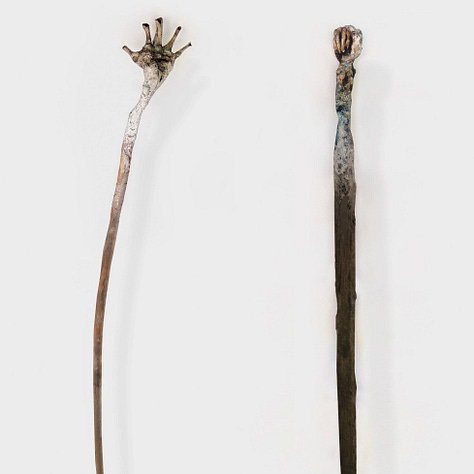

The Four Roles
Is there enough room?
What is the time?
Where is the key?
Is that the only door?
In the Earth Dialogue and Eight Fires teachings the four roles followed the same lines as the gridbusters! game but could shift to according to the circumstances. In online breakout rooms, for example, the questioner took on the task of scribe, so people could pool their notes and feed back to the whole group in a plenary. These are listening circles, as much as speaking circles, and the more closely and kindly people listen the more a speaker can share what is in their hearts.
DOOROPENER/SPEAKER This is the person who brings the quality, place, plant, myth or whatever is being jointly explored, into the room. It is key that the speaker is allowed to speak uninterrupted, with no ‘chat’, and have the space to explore.
KEYHOLDER/QUESTIONER The person who can asks a question (if necessary), not as an interviewer but as a prompt. This is an exercise about listening at depth and the questioner is the one who holds everyone in that attention. Also to remind people of the form this takes.
TIMEKEEPER The person who keeps the time. We always had a set time in the sessions (three minutes), so this role is to keep the speaker to that allotted time. And in the game it was also to keep the attention in the here and now, and not wander off into reminiscence, or thoughts of the future.
SPACEHOLDER The person who holds the space, making sure everyone is present, that it is a friendly and open session. As this is an alchemical space, the hermetic boundaries of time and space are important, as well as ensuring everyone gets equal attention.
When everyone has had their turn, the scribes share their notes and one person feeds back to the whole assembly. What was always surprising is how that everyone’s testimonies connected, the invisible relationships that emerged between the pieces people brought, a weaving of threads that made a coherent whole.
The future, you realise, is never singular. It is an ensemble work.
Thank you for reading everyone and hope to be back in June with leafy tech from the Plant Practice, and further adventures in metaphysics for these incoherent times. If you would like to read more about the ‘Eight Fires’ ceremonial practice, you can find the book in the Dark Mountain shop here




"The future, you realise, is never singular. It is an ensemble work." - this one is ringing in my ears
I was reading this and my sister-in-law looked over my shoulder at the figure. "What's that?" she said, "It looks Mayan." "I don't know yet," I said. I am still trying to understand it.
For me, this was almost like reading a text from another culture, one as distant as the Mayan. Your loss of Mark must have dimensions that aren't at all obvious to those of us whose relationships don't carry so much culture.
But I think I would be able to understand this a lot better if I had done the practice, and understand the practice better for reading this.
But it's sad that it can't just be written down and transmitted perfectly that way